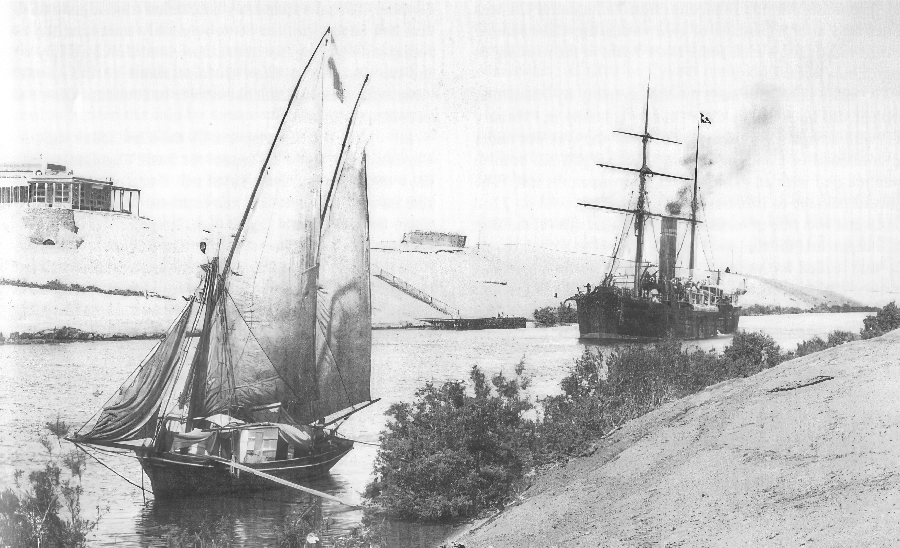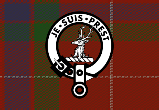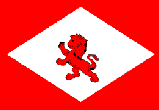Bombay, Chief Presidency Magistrate's Court, 8th December 1892.
PURSUANT to Government Resolution No. 301, dated the 1st December 1892, Marine Department, appointing C. P. COOPER, Esquire, Chief Presidency Magistrate, Captain F. COLE, Commander P. & O. Company's s.s. "Lombardy," and Captain W. POTTS, Dock Superintendent B.I.S.N. Company's Dock, to conduct an investigation into the circumstances connected with the collision between the S.S. "CLAN FRASER," and the native craft "KRISHNA PERSAD," off the Sunk Rock Lighthouse, in the Bombay Harbour, on the 27th November last, resulting in the sinking of the craft and the loss of one of her crew. The Court assembled on the 5th, 6th, and 8th days of December for the purpose stated.
Source Clan Line - Illustrated Fleet History
BOT Wreck Report
Master |
From |
To |
|
W Cowie |
1878 |
1880 |
|
R Green |
1880 |
1882 |
|
T W Gourlay |
1882 |
1883 |
|
J Roberts |
1883 |
1891 |
|
W Henderson |
1891 |
1895 |
|
J B Green |
1895 |
1897 |
|
W N Oliver |
1897 |
1897 |
2. From the evidence before the Court, it appears that the screw steamship "Clan Fraser," of the registered tonnage of 1,330.16, of 250 horse-power, 305 1/10 ths feet long, owned by Messrs. C. W. Cayzer and Company, Glasgow, in command of Captain William Henderson, who holds a Board of Trade certificate of competency as master, No. 95,185, left Liverpool on the 29th of October last, with a general cargo, bound for Bombay. She was properly equipped and manned in every respect.
3. They passed Aden at 10 minutes past 2 in the afternoon of the 18th November last, and made a fair passage towards Bombay. They sighted the Outer Light at about 10 o'clock on the night of the 26th November last, and took on board the pilot, Mr. Thomas Canavan. at midnight. The Outer Lightship then bore E. by N. one mile. The steamer's lights were in order and burning brightly. Everything had been made ready on board before dark for' the purpose of entering the dock at once. There was a light wind from the north-east. It was high water on the 27th at 4.21 in the morning. The engines were on reduced steam.
4. The pilot at once proceeded to the bridge, where he found the captain and the second officer. The second officer was sent aft to get one of the boats ready to lower to send ashore to the dock master, and was absent from the bridge about 15 minutes, during which time the third officer was on duty on the bridge. A calasee was at the wheel on the upper bridge and steering by steam. The chief officer, a calasee and the carpenter were on the forecastle head keeping a look-out. The pilot gave the orders "Slow," "Half speed" and "Full speed" ahead, which were carried out, and they proceeded up the harbour.
5. The chief officer says "We had just passed the " Sunk Rock Light when I saw a craft under sail about " half a point on our port bow without a light, and I " reported to the bridge immediately, 'A craft under sail " half a point on the port bow without a light.' She " might have been 3/4 ths of a mile off when I first saw " her, but I could not tell exactly. At first she seemed " going in the same direction as ourselves, as I could " see no light. In a few seconds I noticed she was " coming towards us in an opposite direction. I then " reported to the bridge she was meeting us. I sang " out 'Hard-a-port.' Both my reports were answered " at once 'All right.'"
6. The pilot says "After passing the Sunk Rock " Light, I was steering for the Dock Channel to pass " outside the Middle Ground. The chief officer sang " out, 'A vessel on the port bow without a light.' I " went to the port side of the bridge and got my " glasses on the vessel, and saw that she was a native " craft running before the wind on the direct opposite " course to the steamer. We were then past the Sunk " Rock and to the northward of it. When I saw her, " she was a little on our port bow, about 100 yards " distant. She might have been more. I put the " steamer's helm hard-a-port immediately, and we " opened the craft well on the port bow. I suddenly " saw her change her course to cross the steamer's " bow and then I stopped and went full speed astern " with the engines. The engines had been going " astern about half-a-minute when we collided with " the craft. We struck her on her starboard side, and " we carried her on with us for a short time, and she " seemed to break in two, and one half passed us on " our starboard side. I saw no light whatever on the " native craft. The Sunk Rock was bearing south" " west and the Dolphin Light north-west by north. I " took these bearings just after we struck the craft. " We might have gone two ships' lengths from the " spot, we actually struck her before I took the " bearings. I dropped the anchor immediately after " the collision. I took the bearings before I dropped " the anchor. The time of the collision was 45 minutes " past midnight."
7. The captain states "A vessel was reported from " the forecastle head. I jumped amidships. At this " time we had just passed the Sunk Rock. When I " first saw the buggalow, I could only see her sail. I " could not see her distinctly. I think she was about " two ships' lengths from us. The pilot gave orders " almost instantaneously to port the helm hard over. " I looked and saw the man at the wheel was doing it. " I then went towards the port side and noticed a " vessel coming down on the port side clear of us. " She seemed gradually opening out. I then noticed " her alter her course to apparently cross our bows. " An order was immediately given to stop and go full " speed astern, which was carried out instantly. " Before we had time to get the way off the ship, the " buggalow was under our bows. We struck her " amidships. She was hanging to our bows for a few " seconds, when she broke in two. I saw no light on " the buggalow, not from the time I first saw her or " at any time."
8. The second officer states he went aft and got ready the boat, and then returned to the bridge. They had not then passed the Sunk Rock Light. He stood by the telegraph on the port side. It was at full speed. Shortly after they passed the Sunk Rock Light, the chief officer sang out, "A craft on the port bow with no lights." The pilot looked at the craft and gave an order to put the helm hard-a-port, which was carried out at once. A second afterwards the chief officer reported, "A craft ahead, no lights, hard-a-port." The pilot in one breath gave the order "Stop her," "Full speed astern." The order was at once telegraphed to the engine-room, and a reply received. A minute afterwards he saw a black object with a sail over the bows.
9. The chief officer states " When the native craft " was about a steamer's length from us I noticed she " had altered her helm, and had shown the whole of her " broadside to us. Our ship was going away to star- " board on a port helm all the time, and in a few " seconds after the craft altered her helm, we collided " with her on her starboard quarter. I did not see any " light whatever. When we collided with her and " struck her, I was looking at her over the bows. I " did not see a light of any description. I did not see " a glare."
10. The carpenter and the calasee on the look-out both state, they saw no light upon the native craft.
11. The native craft was the batela "Krishna Persad," of 27 tons, No. 2,998, registered at Bombay, an open boat, and was in charge of Trimbuck Pandoo, five men and a boy. She was loaded with cocoanuts, and bound for Broach. She left Bori Bunder at about 10 or 11 on the night of the 26th November, and was sailing out with the wind nearly aft, with her tack on her port side. The tindal and the members of the crew examined, all state that she had a light shortly before the collision, hanging somewhere in the bows. It was a small, square lantern with four clear glass sides, within which was a small lamp with kerosine oil and a country-made wick. That they noticed a steamer some distance of. That she approached them. None of them knew what lights a steamer carries. They all became confused, and called out to the steamer, and the man at the helm, without any orders from the tindal, put his helm to starboard, but they say she did not answer her helm, as there was little wind and she had no way on, and that the steamer ran into them. cutting their vessel in two. Their evidence is of a most conflicting and unsatisfactory nature. If their statements are to be believed, their lamp was lighted at sunset, and had been burning since, that would be for 6 or 7 hours, which appears very improbable.
12. Immediately after the collision, the captain gave orders to the second officer to lower the boat and to proceed to the wreck and to senrch for the native crew. The second officer took the third officer and three men, and at once lowered the boat and proceeded to the wreck, which he found two or three ships' lengths from the steamer. He found three men on one part of the wreck and three men on the other part, who gave in formation that one man was missing. After searching about for some time amongst the wreckage and the floating cocoanuts, they could find no other person. and returned to the steamer with these six men, reporting to the captain that there was one man missing. The captain immediately ordered the second officer to continue the search, which he did for fully an hour. A stevedore's boat and a doctor's boat that had come alongside the steamer also assisted in searching for the missing man, but he was not found.
13. The steamer sustained no damage, and at about half-past two in the morning the steamer proceeded up the harbour, and came to an anchor off the Dock Channel at 22 minutes past three.
14. The batela was cut in two. Afterwards part of the wreck was brought ashore. The tindal states that Rs. 400, belonging to a merchant Lallubhai Mathuradass, was lost, and also some rupees belonging to the crew, a d all they had on board.
15. The pilot says the cause of the accident was the batela starboarding her helm. If she had kept on her course, she would have passed clear of the steamer at about 100 feet. When he first saw her, if both vessels had kept on their then courses, they would have passed clear of each other, but very close. If the batela had shown a light visible from ahead, he would have got his glasses upon her sooner and ascertained the course she was going, and acted accordingly. From the position in which the batela was, she must have seen their red light if she was looking out, and could not have seen their green light when she first saw the steamer.
16. The captain considers the cause of the accident was the batela altering her course and crossing the steamer's bows.
17. After a careful consideration of the evidence, the Court is of opinion that the cause of the collision between the s.s. "Clan Fraser" and the batela "Krishna Persad" was due to the batela carrying no light visible to an approaching steamer and starboarding her helm, and attempting to cross the bows of the steamer when close to her.
18. The discipline, management, control, and mannving of the steamer had been carefully attended to, the pilot's orders were promptly carried out. a careful look-out was kept, and the steamer's speed was moderate. A vessel under sail, without a light visible to the steamer, was sighted on the port bow. The pilot thereupon did what was right, viz., ported his helm, and thereafter, finding a collision inevitable, reversed the steamer's engines.
19. The night was dark (there was no moon), and we consider it was almost impossible for those in charge of the "Clan Fraser" on such a night to distinguish unlighted craft in their fairway in time with certainty to avoid them.
20. The evidence of the tindal and crew of the batela is unsatisfactory, contradictory in important details, and at variance with their previous statements. It appears that the batela did not carry a clearly visible light forward, in such a position as to have been observable to or from a steamer approaching from a direction opposite to that in which the batela was sailing. The tindal and crew, we think, were otherwise employed than in keeping a careful look-out which the circumstances (a fairway with passing craft on a dark night at such a turning point as the vicinity of the Sunk Rock Lighthouse undoubtedly is) demanded, When suddenly called to the peril of collision, they lost their heads and acted in a manner which brought about the collision. Their ignorance of lights, rules of the road, and general incapacity in a case of emergency, is amply shown in the evidence recorded in the case.
21. After the collision, the captain of the "Clan Fraser" at once lowered a boat and saved six of the crew of the batela. One of the crew named Jeenia appears to have been missing. A thorough search was made for the missing man, which was sufficiently prolonged to have secured his rescue had he been alive.
22. We consider the tindal and the "chota" tindal of the open boat or batela are to blame for the collision. They were bound, under the "Regulations for Preventing Collisions at Sea," to have been provided with a proper light under Article 10, Clause (a) of those regulations.
23. It is to be regretted that one man named Jeenia. aged about 45, and a resident of Chinchun, Tara pore, Zilla Thana, is missing, and is believed to have been drowned.
(Signed)
C. P. COOPER, Chief Presidency Magistrate.
FRANCIS COLE, Commander of the P. & O. S.N. Company's s.s. "Lombardy."
WM. POTTS, Dock Superintendent, B.I.S.N. Company's Dock.

|
Vessel |
Built |
Tonnage |
Official No |
Ship Builder |
Engine Builder |
Engine Type |
HP |
Screws |
|
Clan Fraser (1) |
1878 |
2092 |
80420 |
Alexander Stephen Glasgow |
Alexander Stephen Glasgow |
Compound Steam |
250 NHP |
1 |
Career Summary
1892 In collision in Bombay
1897 Sold to Dene SS Co renamed Oakdene
Clan Fraser (1)
SFJP





